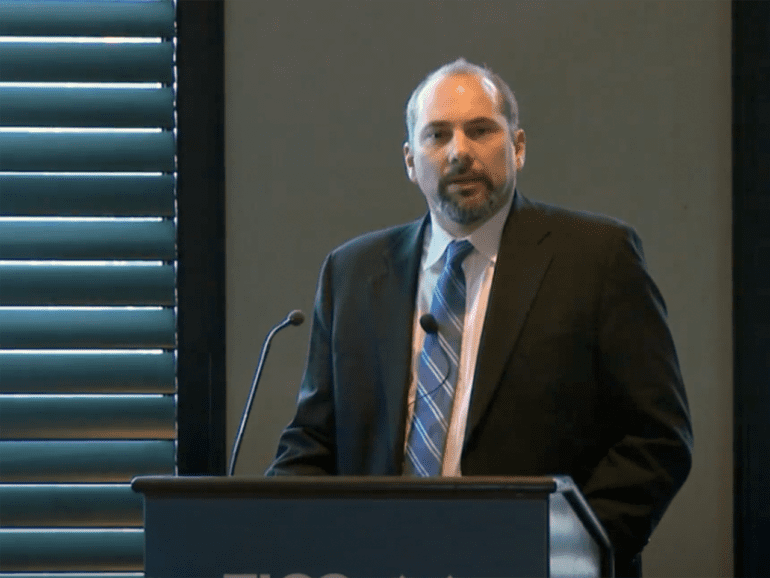As the importance of a robust digital engagement crystallized during the pandemic, some companies were better prepared to make adjustments for several reasons, FICO general manager of decision management Bill Waid said recently.
While companies were at all different stages of digital competence at the pandemic’s onset, they shared the same issue of assessing their current state and developing a progression plan quickly.
Waid said most had targeted it as a growth area, with many incorporating digital engagement levels into their KPIs. Progressive financial institutions saw their ability to handle digital communications as key.

“Most of the cutting edge organizations that are there, they’re more moving towards a real-time, customer profile, customer engagement level with a growing number of alternative data sources,” Waid said.
Waid often hears how companies can get a comprehensive consumer view without investing heavily in customer-level data. The short answer is it depends on where in the customer journey they engage because that dictates which data sets are most valuable. More broadly, they can help themselves by bringing in a plan to get that data into their hands quickly. Once there, it is subjected to ongoing measuring and improvement.
“It’s that closed-loop cycle that we’re focused on, that actually brings the business benefits,” Waid said. “And those organizations that can, they’re able to actually move at a speed of a period of weeks to onboard new data sources, and then in a period of months gather insight out of that data in the operation.
“And that’s the key part: it’s the business who actually is the ultimate owner of this because they’re the facilitator of the strategy and the innovation of the organization.”
Early winners had vision
The early winners have a vision of where they are going, Waid explained. And a significant part of that is the seamless integration of partners in the digital experience. One company integrated into Venmo to offer immediate financing for P2P and P2B transactions. That capability should be a crucial aspect of most BNPL strategies.
While there are cases for accessing additional data sources, most companies already have enough data to improve their offerings significantly, Waid said. The problem is how to get it out of the lake and into a manageable form. Before you even touch that data, first understand you need insight, transparency, and confidence in the crunching machine.
“How many machine models or event analytics that get generated are never used?” Waid asked. “Above 80%.”
“So what we see is this essential part of adoption is that in a business operation you need to put that into the hands of the business where they can understand it, it’s explainable to them, they know how to use it, and they can watch it as they use it. And they overlay their own business judgment on top of it. They can measure the outcome and say, yes, this is what I’m looking for.”
Back to those companies that had a plan going in. They are refining large volumes of data with incredible breadth and width. They can distill it into customer-centric data in real-time, analyze signals and various combinations, and get a handle on it. Within a year, they can begin to assimilate external data too. Some can absorb more than 200 petabytes of information every month.
When considering how banks will look in the future, the key strategy will be partnerships, Waid said. That means other organizations like retail chains will be representing the financial institution in customer interactions like offering credit when in the store or shopping online.
Add data to core to understand consumers
“What a lot of banks are looking for is to take the core of what they are as a bank, and they’re looking for the ability to take that digitally where you can interact with the consumer and use that data to understand the consumer,” Waid said. “Use that data to make sure you’re making the right offer at the right time to that consumer. And then they’re actually projecting that forward through the partner.”
In some cases, when the customer is already a customer of the bank offering the financing, it reinforces their experience with the bank, well beyond what an affinity program can do.
As open banking comes to North America, institutions wishing to take full advantage better have a solid digital strategy across onboarding, servicing, and ongoing engagement heading in, Waid advised. You have the customer data they have generated with you and everything else they bring along with them. And you have to protect it.
Even in this digital age, the human element needs to play a vital role, Waid said. Institutions need to absorb that data while overseeing dashboards and interfaces to see what is going on so the service can continuously be improved. Gone are the days of sticking with the product you introduced along with the market segment it targets. Now interactions are very dynamic, and the interplay is strong.
And everything happens fast, he added. Institutions can’t afford to spend billions transforming their data, so they have to look to technologies like the cloud while ensuring they can attach it from different channels and locations.
“The idea of actually just looking at your risk data profile information is not sufficient anymore,” Waid said.
Quick pivots won the day
While many institutions made a specific mistake during the pandemic, some were able to recognize it and move on quickly, Waid said. In 2019 the focus was on customer acquisition, but in 2020 it shifted to what they believed would be high delinquency rates and how to get ahead of them. That was a mistake.
Digitally focused organizations looked to specific data sets to detect possible defaults and then developed a strategy to address them. But within months, they realized the issue was not as significant as initially anticipated. They quickly pivoted back to their earlier growth strategies, leaving the laggards in the dust.
Customers noticed too, Waid said. The banks who struggled offered a clunky user experience while those who adjusted away from delinquency provided better service, which led many customers to switch.
Fintechs were generally better prepared for the last two years, Waid observed. They tend to have one single touchpoint and view every possible interaction with the customer as part of their platform.
“The fintechs tend to be very model line or single point engaged with the consumer,” Waid said. So for that purpose, they had growth, but those banks who are more diverse, the more traditional banks that had multiple product offerings, those that were actually ready, saw an uptick across the board.
Machine-learning can benefit
When considering how machine learning can benefit your organization, note it is best at combining different data sets and finding patterns in them, Waid said.
In your plans, make space for human elements, for rare is the business case when a machine should completely take over. FICO calls it “Responsible AI.” The company needs transparency into what the machine is saying to ensure its judgment is solid and bias-free. Investors see this need, and over the last few years, they have shifted their focus from enabling data scientists to monitoring system effectiveness. The cycle time is reduced, and a highly collaborative value chain emerges.
Data profiling is the unsung hero behind machine learning, Waid said. An effective system does not automate the creation of strategies but instead notifies people when exciting features are found.
“(It should be) making it easier for the business to say they’re going to evolve that machine instead of just handing it off to the machine in a completely autonomous fashion, where it just goes and does what it does and, you get a little nervous? Is it really doing what I wanted to do?” Waid concluded.


